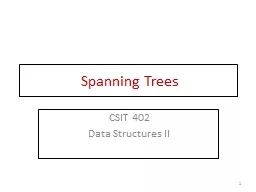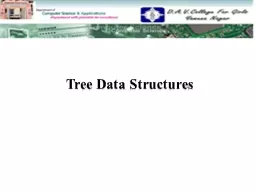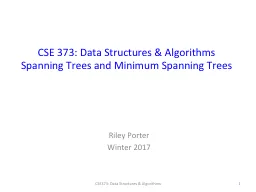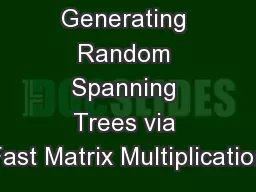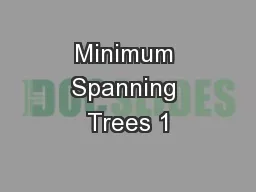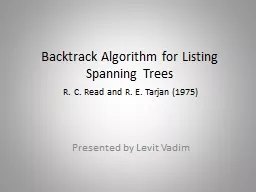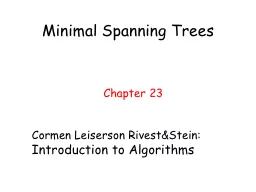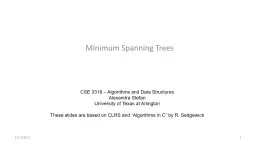PPT-Spanning Trees CSIT 402 Data Structures II
Author : giovanna-bartolotta | Published Date : 2019-06-25
1 2 Two Algorithms Prim build tree incrementally Pick lower cost edge connected to known incomplete spanning tree that does not create a cycle and expand to include
Presentation Embed Code
Download Presentation
Download Presentation The PPT/PDF document "Spanning Trees CSIT 402 Data Structures ..." is the property of its rightful owner. Permission is granted to download and print the materials on this website for personal, non-commercial use only, and to display it on your personal computer provided you do not modify the materials and that you retain all copyright notices contained in the materials. By downloading content from our website, you accept the terms of this agreement.
Spanning Trees CSIT 402 Data Structures II: Transcript
Download Rules Of Document
"Spanning Trees CSIT 402 Data Structures II"The content belongs to its owner. You may download and print it for personal use, without modification, and keep all copyright notices. By downloading, you agree to these terms.
Related Documents

